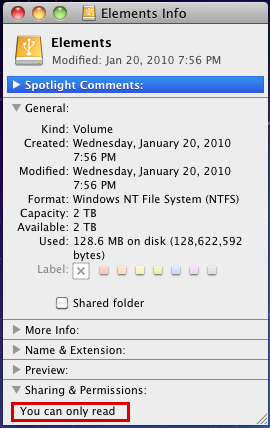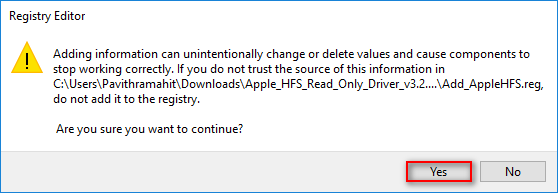

- #Reading mac file system on windows for mac#
- #Reading mac file system on windows full#
- #Reading mac file system on windows pro#
- #Reading mac file system on windows windows#
I don't use ZFS for Mac OS, only ZFS on Linux. For a long time I only used it experimentally and it often let me down.) (I'm also increasingly using BTRFS which recently seems to have crossed some threshold of stability for my use cases. Now, the only "cross-platform" file system I use is ZFS, presented via CIFS by Linux running in a VM. Granted, it was the best thing around for a long time, but not any more. Mainly due to bitrot and lack of checksumming.
#Reading mac file system on windows windows#
NTFS formatted from Windows 2000, worked flawlessly and interchangeably with more modern versions of Windows, including switching back and forth between Windows 2000 in a VM, and Windows Vista (at the time).īut still, NTFS just wasn't robust enough for reliably storing massive amounts of data over long periods of time, even if in a mirrored configuration (and especially in a RAID5 configuration). Performance can't compare to directly attached storage, but I finally got to say goodbye to data corruption and the distrust and headaches it caused.

Years ago when I got fed up with the data corruption using NTFS-3G, I started using a small VM running Windows 2000, and shared an NTFS volume "natively" to the host OS via CIFS. A virtual machine sharing its native filesystem to the host OS via CIFS: This is hands-down the best solution for most of my use cases.In theory, FAT+ allows for 256GiB files and using a higher block size You can in theory overcome the 32GB FAT32 limitation, with Fat32Formatter, but I don't know how compatible it is across systems. (And cameras, and TVs, and.) There is a per-file 4GB size limit and 2TiB total volume size limit. FAT32: In my experience, this is the only truly "cross-platform" file system that can bridge Mac, Linux, and Windows.This was a few years ago, maybe it's better now - but it was "sold" as solid then and it wasn't. NTFS: I've had all kinds of problems with NTFS-3G, going back and forth between Windows, Mac, and Linux.Apparently, formatting the drive in Windows with a block size smaller than 1024 bytes might work. There are compatibility problems between the platforms because of different block sizes. exFAT: At the bottom only because of my own lack of experience with it, and its relative newness.

Here are the local storage solutions in increasing order of viability (which is inherently subjective and dependent on specific use cases):

(I've worked around security/privacy issues with transparent per-file encryption, and use this in parallel with the solution I've outlined below, for different use cases.) I've done this kind of thing for years and can probably help you avoid the same pains I went through.Ĭloud storage would be ideal for some use-cases, but sketchy on privacy/security without additional work, and not necessarily suitable for use cases involving a large amount of data.
#Reading mac file system on windows full#
how good is it in real life? does it offer real NTFS full support as it says?, great Stability? Speed? Journaling? Not the one i would like to pick.Īfter more research i've found Tuxera NTFS for mac, seems to be nice, but. Maybe i did something wrogn, BUT still the data loss is a problem.įAT32: Limited drive size. Heard some good & bad things about MacDrive but still not so sure.ĮxFAT: This way is the way i've already tried, bad experience with it, but most of the people seems to approve this option.
#Reading mac file system on windows pro#
HFS+: Using MacDrive Pro in windows to have read/write access to mac partition, i guess there's a way to allow linux support for hfs+. NTFS: Using MacFUSE & NTFS-3G to enable read/write access, or Paragon NTFS, but i've heard some bad things about stability & speed of those options. Now i'm looking for the most accepted file sys to share files between them, so far i've found these options: I've a laptop with triple boot, Yosemite, Windows 8.1, CentOS 7, and need a partition for sharing files between the 3 os's, i've been using exFAT, as it is supported by OSX & Windows but had some issues with linux and after try to mount it on linux, osx didn't recognize it, and i was unable to mount it, then just windows recognized it and after 1 day of using it got corrupted, i had to get my data back with TesDrive.


 0 kommentar(er)
0 kommentar(er)
